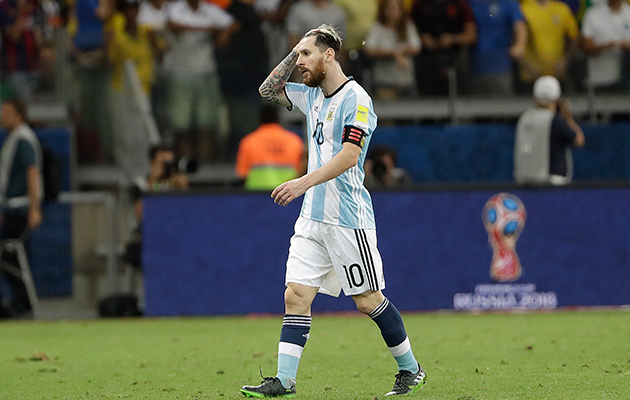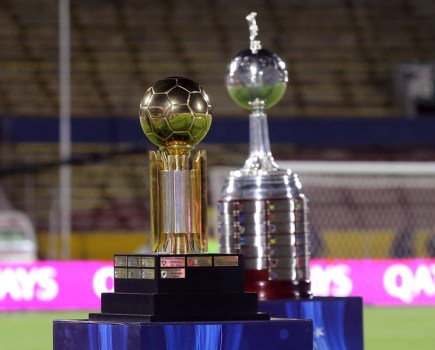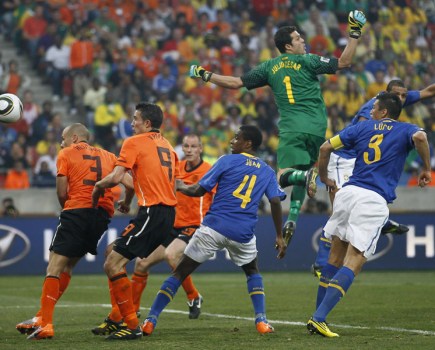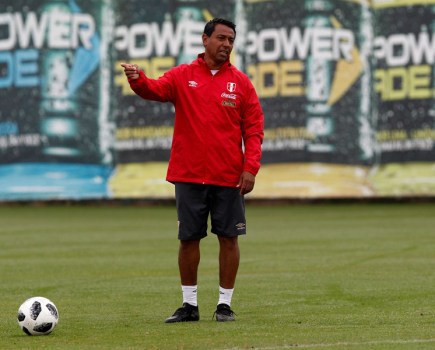As Argentina sink alarmingly in World Cup qualification, it is easy to overlook the fact that this is a team that reached three finals in the last three years, only to lose them all by narrow margins.
Indeed, part of the current crisis is a hangover from all of these near misses. In a culture where losing a final can often be seen as worse than going out in the group stages, the Argentina squad have suffered a serious setback to morale. There are plenty of domestic problems with the local FA, but had the team emerged triumphant from the penalty shoot out against Chile in New Jersey on June 26th, then things might be different. Coach Gerardo Martino would probably not have resigned, for example, leaving replacement Edgardo Bauza thrown right into the deep end.
For all his proficient CV at club level, Bauza has never operated the level of quality on offer in the World Cup qualifiers, both in terms of the players at his disposal and of those on the opposing side. He has had no time to work with his players, and took over at the worst possible moment – with a third of the marathon campaign crammed between September and this Tuesday. It is hardly surprising that he has struggled – especially as the underlying problems have been there for a while.
It is a moot point when Argentina last had a truly convincing team. There have been some fine displays in recent years – the 4-0 destruction of the USA in the Copa Centenario stands out as a recent example – but for a genuinely solid, effective, reliable unit it is probably best to go back a decade. The 2006 side should really have beaten hosts Germany in that World Cup quarter final. A year later Argentina were scintillating during the Copa America in Venezuela, until they have an off day in the final and were ambushed by a Brazil side who beat them with a combination of the counter-attack and persistent fouling – a triumph which arguably did long term harm to Brazilian football. And then in 2008 they won the Olympic gold medal in Beijing.
From a position of strength, Sergio Batista, the coach of that team, made a warning. The quality of youth development work in the country, he said, was on the decline.
History has borne him out. At that point the Argentina side was full of graduates from an Under-20 side who won the world title six times between 1995 and 2007. They have not come close since – on occasion they have failed even to qualify for the World Under-20 Cup. The production line has slowed down, especially in certain positions.
The wheels started to come off during the 2010 qualifiers. Diego Maradona took over, dragged them over the line with a cautious line up, and then appeared to lose his grip during the tournament, unbalancing the side to include Carlos Tevez and leading Argentina to a predictable slaughter against the Germans.
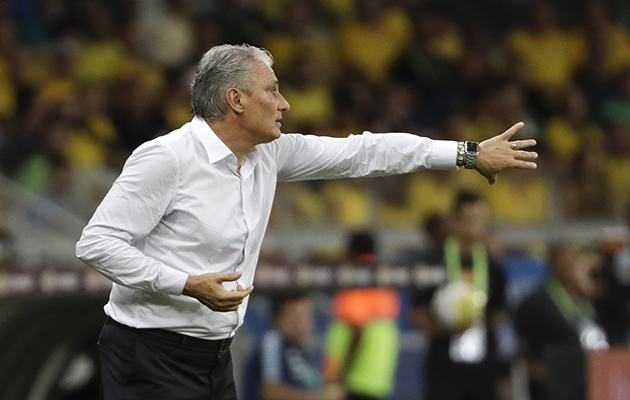
Argentina coach Edgardo Mauza is struggling to get the best out of Lionel Messi.
Subsequent coaches – Batista, Alejandro Sabella, Martino and now Bauza – have all wrestled with the same problem; how to set up the side to get the most out of Lionel Messi. The base system has been a Barcelona-style 4-3-3, but with significant differences. The Achilles heel has been the dearth of good centre backs. Argentina have been unable to press high, and the sluggish defensive line drops deep, forcing Messi to cover much more ground that he does with his club.
At times they have been exhilarating watch; during the 2014 qualifiers Sabella managed to get Messi, Sergio Aguero, Gonzalo Higuain and Angel Di Maria all firing together. But it came at a price. Sabella confessed that when his team were under attack he would shut his eyes and hope for the best. And at the World Cup he saw that his stars, drained by the European season, were out of gas, forcing upon him a more defensive strategy.
During that tournament, as so often recently, Argentina were overwhelmingly dependent on two players – Messi and Javier Mascherano. In the team’s last win – 1-0 over Uruguay in Bauza’s debut match – the pair were almost superhuman. It is not going to happen in every game. Mascherano is now 32, and has probably played too much football in recent years. And opponents will obviously concentrate on closing down Messi and isolating him from his team-mates.
What can Bauza do? Very little before Tuesday’s clash against the dangerous Colombians, who will eagerly launch their counter-attacks against Argentina’s highly suspect defence. After that game there is a welcome pause; Bauza (or a successor) will have until late March to reflect on a coherent idea of play.
But what to do against Colombia? Bauza prefers a traditional target man centre forward. But Messi and Higuain appear to have little chemistry. In midfield surely a place can be found for Ever Banega to knit the side together with his intelligent passing. And at the back, can he still have confidence in the centre back partnership of Nicolas Otamendi and Ramiro Funes Mori, who looked vulnerable against Venezuela and Peru and who were obviously out of their depth against Brazil, taken apart both individually and collectively.
But the cupboard of potential replacements – as Sergio Batista predicted – is alarmingly bare. Argentina have not allowed the veteran Martin Demichelis to retire from international football – they need him as cover for the Otamendi-Funes Mori pair, who are picking up a yellow card per game. For the time being, then, whoever coaches Argentina will have to wrestle with a key question; how to protect the defence while also having enough players around Messi to give him some options.
This is the puzzle that Edgardo Bauza was utterly unable to solve against Brazil, and it currently jeopardises Argentina’s participation in the next World Cup.

